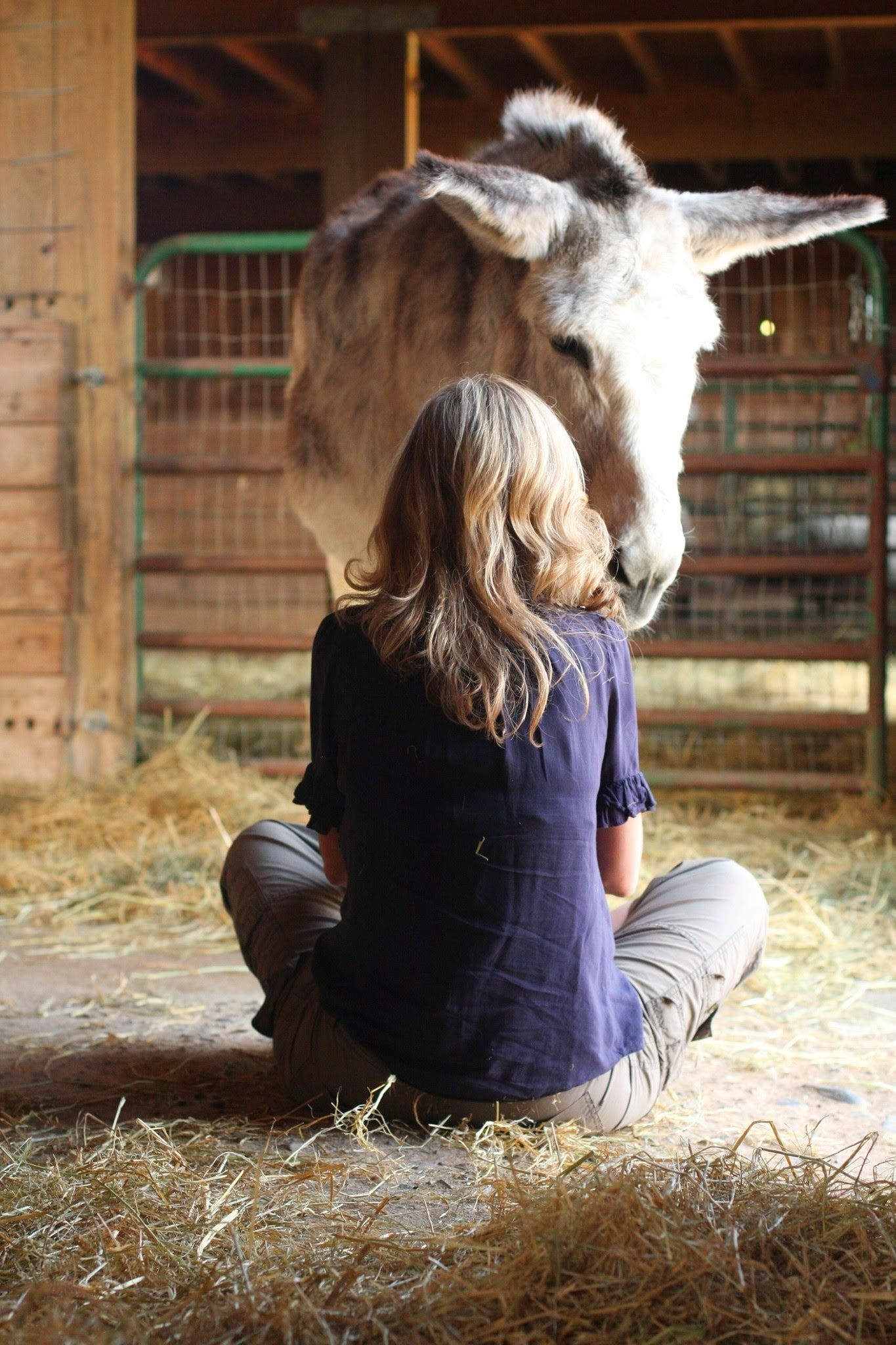The Meatless History of Lent
The tradition of abstaining from animal products during the 40 days before Easter
For centuries, the lead-up to Easter was marked by meaningful abstention—meat, dairy, and eggs were once off the table entirely. Today, these traditions have been softened, even reversed, often in the name of comfort or cultural habit. In this reflection, I explore the forgotten roots of the season, what we've lost by not questioning what we keep, and how we might honor both our values and traditions—without sacrificing either.
All of the articles in this series will be here: The Food History of Easter and Passover—Through a Plant-Based Lens
A Time of Reflection and Ritual
Lent is the 40-day period of fasting, penance, and spiritual reflection observed by many Christians in preparation for Easter. The word Lent comes from the Old English word lencten, meaning “spring,” reflecting both the season in which it occurs and its themes of renewal and rebirth. Beginning on Ash Wednesday and ending the day before Easter Sunday. I grew up Catholic and always loved this time of year. It held a profound mix of sorrow and joy, darkness and light, solemnity and jubilation.
I’ve always loved this time of year — the smell of spring in the air, the days stretching longer, and Easter on the horizon. I also genuinely loved deciding what to “give up” during Lent—a longstanding tradition rooted in spiritual discipline and self-denial. The practice invites participants to forgo something they enjoy—something they eat, drink, say, or do—as a way of cultivating mindfulness, humility, and restraint.
Even as a young girl, I appreciated the deeper meaning behind the practice—the chance to pause, reflect, and refocus—even if what I was giving up was something as simple as candy, soda, or donuts. (I grew up in a house with a lot of candy, soda, and donuts!) And when Lent ended, the return to whatever I had given up felt all the more meaningful—and even sweeter.
As I grew older, even as I moved away from practicing the religious aspects of the holiday, I still saw Lent as an opportunity for self-discipline and personal growth. From a secular perspective, it became a time to reflect, reset, and demonstrate that—with a little conviction—we can do whatever we set our minds to. That sense of intentional restraint stayed with me, even as I redefined its meaning in my own life.
The Historical Roots of Fasting
Traditionally, Lenten abstention extended beyond food—Christians were also called to refrain from pleasures like sex, festivities, and certain types of work. But at its core, the most consistently emphasized form of restraint was dietary—specifically, the avoidance of animal products.
Historically, throughout the medieval Christian world, the consumption of meat, dairy, and eggs was forbidden during Lent. In the early centuries of the Church and throughout the Middle Ages, Roman Catholics were expected to abstain from all animal products—not just meat—during the 40 days between Ash Wednesday and Good Friday. The idea was to practice self-denial and temperance, aligning with the penitential nature of the season.
Over time, however, “dispensations” (exceptions) began to be granted. Dairy was the first to be allowed back in, followed by eggs, gradually softening the strictness of the fast. Eventually, abstaining from all animal products during Lent was no longer the norm in the Roman Catholic Church.
In addition to the 40-day Lenten fast, Catholics were also expected to abstain from animal flesh every Friday of the year, a practice rooted in honoring the day of Christ’s crucifixion. Even then, exceptions were made: for instance, if a wedding or special occasion fell on a Friday, meat was permitted.
By the time I was growing up in the 1970s, Catholic abstinence practices had been significantly relaxed. We were required to abstain from meat only on Fridays during Lent. Fish was considered acceptable. So were animal fats in liquid form—such as chicken broth and other “liquefied” animal products. These are the current rules for Lent according to The United States Conference of Catholic Bishops:
“Abstinence laws consider that meat comes only from animals such as chickens, cows, sheep or pigs — all of which live on land. Birds are also considered meat. Abstinence does not include meat juices and liquid foods made from meat. Thus, such foods as chicken broth, consomme, soups cooked or flavored with meat, meat gravies or sauces, as well as seasonings or condiments made from animal fat are technically not forbidden. However, moral theologians have traditionally taught that we should abstain from all animal-derived products (except foods such as gelatin, butter, cheese and eggs, which do not have any meat taste). Fish are a different category of animal. Salt and freshwater species of fish, amphibians, reptiles, (cold-blooded animals) and shellfish are permitted."
Some Orthodox Christians, however, have continued to follow the earlier, more stringent teachings. Their Lenten fast typically includes abstaining from meat, dairy, eggs, and sometimes even oil and wine. The original spirit of the fast—marked by discipline and restraint—remains central to Orthodox observance. But in most Christian communities, the bar for what is required has been set relatively low, even though the original intention behind the practice—reflection, self-denial, and spiritual clarity—still resonates for many.
Tradition à la Convenience
Lent is just one example of how traditions evolve—and how we adapt them to suit our desires, our circumstances, or our values. We continually pick and choose which traditions to uphold, often justifying our choices on the grounds of “tradition”—whether it’s eating turkeys on Thanksgiving, eggs at Easter, or meat during Lent. But that argument doesn’t always hold up.
This becomes especially clear when someone deviates from the norm—like vegetarians and vegans who choose not to eat turkeys on Thanksgiving, lambs on Christmas, eggs during Passover, “corned beef” on St. Patrick’s Day, or “ham” and eggs at Easter. At best, others may respond with pity; at worst, they may accuse us of disrespecting cultural norms or “flying in the face of tradition.”
The implication is that we can’t eat in a way that reflects our values of compassion and honors tradition at the same time—as if the two are mutually exclusive.
But no matter how much we romanticize tradition, our attachment to it isn’t as tenacious as we think. In practice, we cherry-pick the customs we want to uphold and quietly set aside the ones we don’t—for reasons of convenience, modernity, or personal preference.
When those choices are based on convenience or modernity, few people object. But when ethics are the driving force, the reaction is often different. Vegans have been accused of everything from being unpatriotic (for not eating good old-fashioned American fare like hot dogs and hamburgers) to “denying our evolutionary heritage” simply for choosing not to consume animals and their secretions.
Nobody wants to see themselves as contributing to cruelty. But participating in cultural customs? Carrying out tradition? That doesn’t sound so bad. In fact, that sounds pretty good.
The Danger of Unquestioned Rituals
This tight grip our meat-eating habits have on us reminds me of Shirley Jackson’s haunting 1948 short story The Lottery, about the annual selection of a sacrificial victim in a small American town. Jackson shines a light on humanity’s tendency to cling blindly to unexamined rituals and to participate in senseless violence.
In the story, one of the townspeople hears that a neighboring village has abandoned the ritual and objects, “But there’s always been a lottery.” We justify our use of animals in much the same way: “But we’ve always eaten animals,” we say. Still, just because we’ve always done something doesn’t mean we always have to.
Once we know better, we can make new choices, better choices, more compassionate choices. That’s what it means to be human. That’s what it means to grow. With a little creativity and a lot of sensitivity, we would find that we can indeed adhere to traditions while honoring our values. We need not sacrifice one for the other.
This piece is part of a special spring series exploring our deep attachment to food rituals and traditions—especially those tied to Easter and Passover. Along the way, we’ll uncover surprising histories, question long-held customs, and celebrate meaningful ways to align our values with the holidays we cherish.
All of the articles and recipes in this series are here: The Food History of Easter and Passover—Through a Plant-Based Lens). Please share!
In this series:
Carnival: A Meat-Free Tradition: the surprising origin of the word and its historic connection to meat
Homemade Soft Pretzels — A classic recipe that’s easy to make and hard to resist!
Tempura: The Plant-Based Origins of Japan's Favorite Fried Dish: What Lent, Language, and Latin Have to Do with Tempura
Celebrating Easter Without Eggs: What better way to celebrate these ideals than by choosing objects that don’t just represent life and hope—but truly embody them?
How a Plant-Based Seder Celebrates the True Meaning of Passover
I would love to hear your thoughts! Please share your comments below.
More Resources for You!
👉 Because the publisher took The Vegan Table (and Color Me Vegan) out of print, I am able to repurpose all of my recipes for which I own the copyright again. Please check out my Recipe E-Books and my library of On-Demand Cooking Classes for more recipes, including bundles for Easter and Passover!
👉 Work with me 1:1 – Get personalized guidance to build healthier habits, cultivate self-compassion, communicate with conviction, strengthen emotional resilience, or whatever you are looking for.
👉 Read A Year of Compassion – Daily inspiration to help you live with intention, kindness, and clarity
👉 Listen to Food for Thought – Inspiration for living compassionately, sustainably, and healthfully (18 years strong!)
👉 Travel with me! I host animal-friendly, luxury, all-inclusive vegan trips around the world, specifically curated to ensure high-quality, high-touch premium experiences. Check out our upcoming trips, and let me know if you have any questions.







